#Dholavira archaeological site
Text
Unearthing the Secrets of Dholavira: Exploring Indus Valley Artifacts

Embark on a journey through time as we delve into the mysteries of Dholavira. Ancient artifacts and stone remnants offer intriguing glimpses into the daily lives, culture, and civilization of the Indus Valley people. Join us in uncovering the fascinating stories buried beneath the sands of time. Experience the allure of Dholavira with the best accommodation options evoking its rich history.
#EvokeDholavira#dholaviraresort#indusvalleycivilization#dholaviratour#dholavirakutch#dholaviraheritagetourism#archeologicalsite#ancientindia#architecture#Dholavira archaeological site#Dholavira Tent City packages#Luxury Dholavira tours#Harappan civilization travel packages#Evoke Dholavira accommodations#Historical Dholavira trip
0 notes
Text
Exploring Gujarat: Where Diversity Meets Beauty
Gujarat, a vibrant state on the western coast of India, is a tapestry of colors, cultures, and landscapes. From the arid beauty of its deserts to the majestic stature of its monuments, Gujarat offers a journey through time, nature, and spirituality. This article takes you through some of Gujarat’s most captivating destinations, each telling a story of its own.
Nadabet: A Peek into Border Life
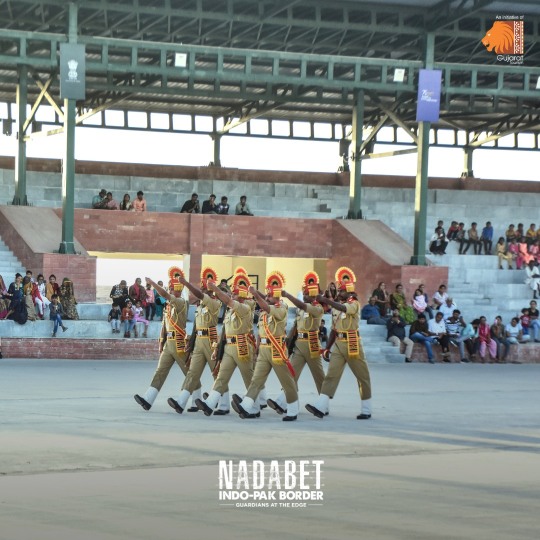
Nestled on the India-Pakistan border, Nadabet is more than just a geographical landmark; it's a testament to the spirit of nationalism. The recently developed 'Seema Darshan' project allows visitors to experience the life of BSF soldiers guarding our borders. It’s a unique blend of patriotism with tourism, offering an insightful peek into the rigorous lives of India's border security forces. The area also showcases a captivating desert ecosystem, making it a must-visit for those interested in the confluence of nature and national pride.
Rann Utsav: A Cultural Mosaic
The Rann Utsav is an annual festival that transforms the stark white salt marshes of the Kutch into a canvas of vibrant colors and lively festivities. This cultural extravaganza, spanning three months during the winter, celebrates the rich heritage and traditions of Gujarat. Visitors can indulge in folk dances, music, handicrafts, and sumptuous local cuisine, all while staying in traditional Bhungas (mud houses) or luxurious tents. Rann Utsav-The Tent City provides luxurious tents and amenities, ensuring that guests enjoy the festival’s vibrancy in comfort and style.
Statue of Unity: An Architectural Marvel
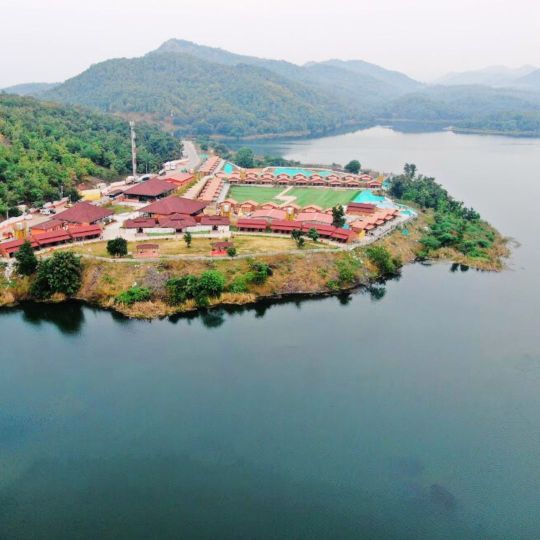
The Statue of Unity, commemorating Sardar Vallabhbhai Patel, is not only a marvel of engineering but a beacon of India's unity. Surrounding the statue, visitors can explore the Valley of Flowers, a vibrant spread of native flora, and the Sardar Sarovar Dam, showcasing India's engineering prowess. The viewing gallery at 153 meters provides a breathtaking panorama of the surrounding landscape, making it a must-visit landmark in Gujarat. Statue of Unity Tent City-1 offers a luxurious stay, where visitors can relax after exploring the statue and its surroundings, ensuring a comfortable and enriching experience.
Dholavira: A Glimpse into Ancient Civilization
Dholavira, a significant archaeological site of the Indus Valley Civilization, offers a fascinating glimpse into ancient urban planning and culture. Evoke Dholavira provides a comfortable base to explore these ancient ruins, blending modern amenities with the rustic charm of the surrounding landscape. It's an invitation to step back in time while enjoying contemporary comforts.
Sands of Mandvi: Beaches and Royal Legacies
Mandvi, known for its pristine beaches and the historic Vijay Vilas Palace, offers a blend of relaxation and royal heritage. The soft sands and clear waters of Mandvi Beach provide a tranquil retreat, while the architectural elegance of Vijay Vilas Palace, showcasing traditional Kutchi craftsmanship, transports visitors to the era of kings and queens. The shipbuilding yard, continuing the centuries-old tradition of wooden shipbuilding, adds to the charm of this coastal town.
Shivrajpur: Crystal Waters and Serene Beaches
Shivrajpur Beach, with its crystal-clear waters and white sands, is a hidden gem along Gujarat's coastline. Recognized with a Blue Flag certification, the beach ensures high environmental and quality standards, making it a perfect spot for a family outing. The beach is also a hub for water sports enthusiasts, offering activities like snorkeling and scuba diving to explore the vibrant marine life.
Conclusion
Gujarat is a land of diversity, where every corner tells a different story, every landscape paints a different picture, and every tradition sings a different tune. From the patriotic vibes of Nadabet to the ancient secrets of Dholavira, the cultural festivity of Rann Utsav to the architectural grandeur of the Statue of Unity, the serene beaches of Mandvi and Shivrajpur to the royal legacies, Gujarat beckons travelers with its myriad hues of beauty and culture. It’s a journey where the diversity of India comes alive, inviting you to explore, experience, and cherish.
#Nadabet Seema Darshan#Nadabet Seema Darshan Project#Nadabet Seema Darshan Time#Tourist Places In Gujarat#Places To Visit In Gujarat#Indo Pak Border In Gujarat#Nadabet Online Booking#Gujarat Tourist Places#gujarat tourism
0 notes
Text
Kutch Packages
Kutch is a fascinating region in the westernmost part of India. It is a place that is steeped in history and culture, and there is much to explore and discover here. Whether you are interested in history, culture, or natural beauty, Kutch has something to offer everyone. In this article, we will explore some of the top places to visit in Kutch. Great Rann of Kutch The Great Rann of Kutch is a vast salt desert that stretches over 7500 square kilometers. It is one of the largest salt deserts in the world and a must-visit destination in Kutch. The best time to visit the Great Rann of Kutch is during the winter months, as the weather is mild and pleasant. The Great Rann of Kutch is famous for its spectacular sunsets and the moonlight nights, when the desert is bathed in a silvery glow. Kutch Museum The Kutch Museum is located in Bhuj, the capital of Kutch, and is one of the oldest museums in Gujarat. The museum has an impressive collection of artifacts and exhibits that showcase the history and culture of Kutch. The exhibits include ancient coins, weapons, textiles, and pottery, among others. Mandvi Beach Mandvi Beach is one of the most popular tourist destinations in Kutch. The beach is located in the town of Mandvi, and is known for its clean waters and pristine sands. Visitors can enjoy swimming, sunbathing, and a range of water sports activities here. Aina Mahal Aina Mahal is a beautiful palace located in Bhuj. The palace was built in the 18th century and is famous for its intricate carvings and mirror work. The palace is a testament to the craftsmanship of the local artisans, and visitors can spend hours admiring the intricate details of the palace. Narayan Sarovar Sanctuary Narayan Sarovar Sanctuary is a wildlife sanctuary located in the westernmost part of India. The sanctuary is home to a wide variety of wildlife, including blackbuck, chinkara, wild boar, and foxes, among others. The sanctuary is also home to the Narayan Sarovar Lake, which is considered to be one of the holiest lakes in India. Kutch Desert Wildlife Sanctuary Kutch Desert Wildlife Sanctuary is another popular wildlife sanctuary in Kutch. The sanctuary is home to a range of wildlife, including the Indian wild ass, chinkara, desert fox, and desert cat, among others. Visitors can take a jeep safari to explore the sanctuary and spot some of the wildlife. Dholavira Dholavira is an ancient Harappan site located in Kutch. The site dates back to the 3rd millennium BCE and is considered to be one of the most important archaeological sites in India. Visitors can explore the ruins of the ancient city and learn about the history and culture of the Harappan civilization. In conclusion, Kutch is a fascinating region that offers a range of experiences for visitors. From the Great Rann of Kutch to the ancient ruins of Dholavira, there is much to explore and discover in this part of India. Whether you are interested in history, culture, or natural beauty, Kutch Packages has something to offer everyone.
0 notes
Photo

The Mystery of the World’s Oldest Billboard
The 5,000-year-old port city of Dholavira can be found on an island in the salt flats of the Great Rann of Kutch on India’s western edge. It has been described as “one of the best preserved urban settlements from the period in Southeast Asia” by UNESCO. Researchers have found step-wells and reservoirs that formed a sophisticated water management system, the remains of ancient streets and boulevards lined by houses of varying sizes, the ruins of a jewelry workshop, and one of the most remarkable discoveries in Indian archeology: what is believed to be the world’s oldest billboard The billboard—typically called the Dholavira signboard—was discovered when a team from the Archaeological Survey of India began excavating the southern center of the Indus Valley Civilization in the 1990s. At Dholavira’s northern gate, archaeologists came across two chambers flanking the gate on either side. These chambers looked like storage spaces. And like most storerooms, they were an absolute mess. The team in the western chamber was gently clearing fallen debris and stones that hadn’t been touched for thousands of years when glints of white became visible. After more careful excavation, they found ten large symbols, each about 15 inches tall and made out of multiple pieces of white gypsum, a material that’s used in drywall today. Archaeologists also found evidence of decomposed wood surrounding the symbols. These clues led the researchers to conclude that the symbols were part of a billboard. The bright white gypsum would have made the symbols visible from a distance even at night, as torch light reflected off the mineral, while the surrounding wood would have supported the symbols. R. S. Bisht, who led the team that excavated the site throughout the 1990s and early 2000s, believes that the Dholavira signboard sat atop the largest of the ancient city’s five entrances. Bisht says, “the wooden board was 3.5 meters [11 feet] long and the threshold of the northern gate was also 3.5 meters [11 feet] wide. It seems that it was bolted on the facade of the northern gate and could have been seen from the lower and middle town.” Researchers wondered why the sign was in a chamber next to the northern gate rather than on it. But Bisht believes that an earthquake, a common occurrence in the area, could have been responsible for dislodging the sign, after which the citizens of Dholavira carefully moved it to a storeroom next to the gate. Still, one big mystery remains: What did the billboard say? The symbols are remarkably well preserved, perhaps because the billboard was lying face down for thousands of years, the wood of the board protecting the gypsum symbols from the environment. But they are written in the script of the Indus Valley Civilization, which has not yet been deciphered, so no one knows what information was displayed so prominently in the city. The Dholavira signboard is now in the collection at the National Museum in New Delhi, though it is not on display because of preservation concerns. It remains an object of ongoing research as one of the longest inscriptions in the Indus or Harappan script. Until the script is deciphered, everything that is known about the people and culture of the Indus Valley Civilization comes from archaeological evidence. From its earliest beginnings as the neolithic Mehrgarh culture over 9,000 years ago, the Indus Valley Civilization thrived for thousands of years across the lands of modern-day Afghanistan, Pakistan, and India. The people traded with the civilizations of Mesopotamia and China and built settlements with better-planned drainage systems than some modern cities. Yet, around 4,000 years ago, they abandoned their cities and writing and disappeared. “The Indus Valley people could not get basic needs like fresh water for irrigation and drinking,” says Mahesh Thakkar, professor of geology and head of the Department of Earth and Environmental Science at K.S.K.V. Kachchh University in Bhuj—the closest major city to Dholavira. “Slow climate change over time led them to migrate to the fertile and perennial river basins of the Ganga and Yamuna, leaving their old urban centers abandoned.” The climate events that caused the people of Dholavira to abandon their city were not caused by humans but while we cannot decipher what was written on the sign that the people of Dholavira left forgotten in a storeroom before leaving their city for good, its message about the dangers of climate change is clear.
https://www.atlasobscura.com/articles/oldest-billboard-in-world
0 notes
Text
An Introduction to Gujarat Tours
The western a part of India incorporates of the states of Gujarat. Tour to Gujarat is one to unwind on the sea- revel in a multi-cultural and indulge within side the culinary delights. In addition to the geographical beauty, this location additionally has a full-size wide variety of historic monuments and exercise alternatives attracting a various institution of vacationers to choose Gujarat tours.
The homeland of Mahatma Gandhi, Gujarat is brimming with locations associated with the legend`s existence. The country of Goa is absolutely exceptional from that of Gujarat and gives a fun-stuffed holidaying revel in on its beaches. A blend of those 3 locations makes for an excellent Gujarat tour package.
Gujarat is one of the treasures typically untouched from the hordes of tourists. A lengthy shoreline makes Gujarat one of the most important ports of India. The country encompasses all of the most important web sites of Indus Valley Civilization which encompass Lothal and Dholavira. Home to Father of the Nation- Mahatma Gandhi, Gujarat has witnessed several struggles for Indian Independence movements. West India tourism opens gate to the historic civilizations and archaeological web sites belonging to that age it additionally affords possibility to revel in the approaches of existence of the person who paved India's route to independence. Places of hobby in Gujarat encompass diverse museums together with Gandhi Smarak Sangrahalaya, Colico Museum of Textiles, Vadodara Museum and the Gandhi.
1 note
·
View note
Text
Decline of indus valley civilization pdf
DECLINE OF INDUS VALLEY CIVILIZATION PDF >>Download (Herunterladen)
vk.cc/c7jKeU
DECLINE OF INDUS VALLEY CIVILIZATION PDF >> Online Lesen
bit.do/fSmfG
indus valley civilization essay
characteristics of indus valley civilization
dholavira ruins of an indus valley civilisation site
significance of indus valley civilization
burial practices in indus valley civilization upsc
dholavira pdf
elements of modernism in indus valley civilizationindus valley civilization study material
Die bronzezeitliche Indus-Kultur, auch Indus-Zivilisation oder Harappa-Kultur, war eine der frühesten städtischen Zivilisationen.The collapse of the Indus script thesis: The myth of a literate Harappan Civilization. Electronic Journal of Vedic Studies. 11(2):19–57. 05.07.2022 — short Part IV (“Die Induskultur—Aufstieg und Niedergang” [“The Indus Valley. Civilization—Rise and Decline”], 296–311) is concerned with 1989 "The Archaeology of Nippur from the Decline of the Kassite Kingdom until the Rise of the 1973b Mohenjo-Daro and the Indus Civilization, Volume 3. These measure both Nile flow and Indus pre- misinterpreted as anthropogenic deforestation (Turner et al. cipitation and river flow, functions of the Indian von L Carozza · 2015 · Zitiert von: 17 — but not in a global collapse. Languedoc. Alps. Mid-. Rhône valley Droundak%2oVIRMPR2oo6.pdf> nation of the Indus valley civilization and. 28.07.2021 — Recently, UNESCO has announced the Harappan city of Dholavira in Gujarat as India's 40th world heritage site. It is the first site of Indus von H Kulke · 2005 — The Decline and Fall of the Indus Civilization. New Delhi 2000. Indus Valley Tradition and the Indo-Gangetic Tradition in South Asia, in: Erdosy.
https://www.tumblr.com/netatuwoxamo/697706817427521536/courbes-et-surfaces-cours-pdf-de-catia, https://www.tumblr.com/netatuwoxamo/697706235332542464/libro-teoria-del-derecho-edgar-bodenheimer-pdf, https://www.tumblr.com/netatuwoxamo/697706406693978112/como-insertar-pdf-en-html-tutorial, https://www.tumblr.com/netatuwoxamo/697705729362182144/business-strategy-and-the-environment-journal-pdf, https://www.tumblr.com/netatuwoxamo/697706983032274944/dt343-pdf-editor.
0 notes
Text
Dholavira,Gujarat-Archaeological Site : World Heritage Site
धौलावीरापुरातात्त्विकस्थल : #विश्वविरासतस्थल
______________________________
27 जुलाई, 2021 को गुजरात में स्थित #धौलावीरा को यूनेस्को द्वारा भारत का 40वाँ विश्व विरासत स्थल घोषित किया गया।भारतीय पुरातत्व विभाग (ASI) ने धोलावीरा की खोज 1967-68 में की। इसे हड़प्पाकाल के पांच सबसे बड़े स्थलों में शुमार किया जाता है। सिंधु-घाटी सभ्यता से जुड़ा स्थल पुरातत्विक लिहाज से काफी अहमियत रखता है। इस नगर की…
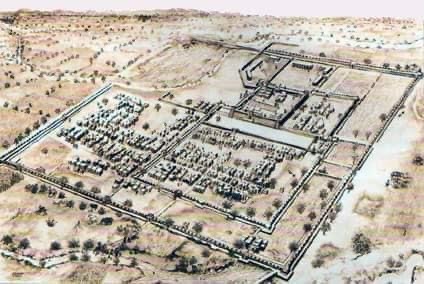
View On WordPress
#ANCIENT INDIA#ancient indian architecture#ASTROLOGY#BHARAT#Dholavira#Gujarat-Archaeological Site : World Heritage Site#HISTORY OF INDIA#HISTORY OF INDIA/BHARAT#INDIA#sanatan dharma#vedic cosmology#Vedic science
0 notes
Video
UNESCO world heritage site In India(Gujarat)-Dholavira
Dholavira, an archaeological site of a Harappan-era, received the UNESCO world heritage site tag on 27th July 2021. Dholavira became the 4th UNESCO site from Gujarat and 40th from India to make the list.
1 note
·
View note
Text
Dholavira Tour Packages | Evoke Dholavira Tent City

Book your Dholavira tour packages with Evoke Dholavira and choose from 1-night or 2-night packages featuring luxurious amenities and top-notch facilities. Experience the magic of Dholavira's ancient history with the comfort of modern accommodations. Our packages offer a perfect blend of exploration and relaxation, ensuring an unforgettable journey into the heart of the Harappan civilization. Make the most of your visit with expert guides, exquisite dining, and exceptional service. Start planning your adventure at Evoke Dholavira today!
#Dholavira archaeological site#Dholavira Tent City packages#Luxury Dholavira tours#Harappan civilization travel packages#Evoke Dholavira accommodations#Historical Dholavira trip#Luxury stays in Dholavira#Ancient city tours India#Evoke Dholavira bookings
0 notes
Text
The Best Places to Visit in Gujarat
Gujarat is a vibrant state in western India with a rich history and culture. It is home to a variety of tourist attractions, including ancient temples, forts, palaces, beaches, and wildlife sanctuaries. Some of the most popular places to visit in Gujarat include:
Nadabet Indo Pak Border

Nadabet is a border town between India and Pakistan, located in the Kutch district of Gujarat. It is one of the most important land border crossings between the two countries. Visitors can witness the daily Beating Retreat ceremony at the border, which is a must-see experience.
Statue of Unity
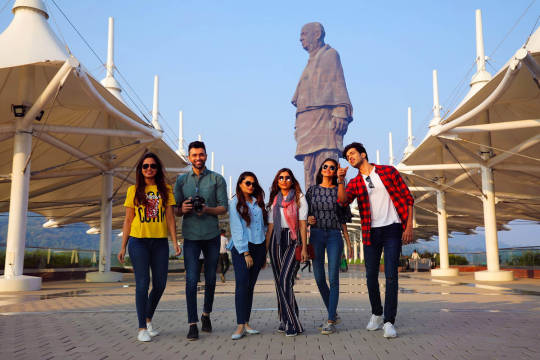
The Statue of Unity is the tallest statue in the world, dedicated to Sardar Vallabhbhai Patel, the Iron Man of India. It is located in Kevadia, Gujarat, and is a popular tourist attraction.
SOU Tent City 1
SOU Tent City 1 is a luxury camp located near the Statue of Unity. It offers a variety of accommodation options, including tents, cottages, and villas. The camp also has a restaurant, bar, swimming pool, and other amenities.
Dholavira
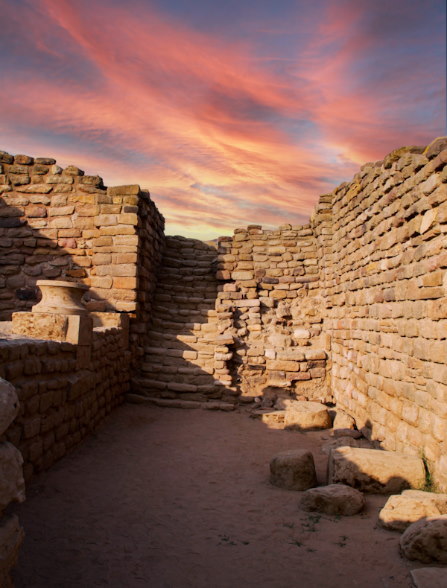
Dholavira is a UNESCO World Heritage Site and one of the largest and most important Harappan cities. It is located in the Kutch district of Gujarat and is a popular tourist destination for those interested in history and archaeology.
Staying information
There are a few budget-friendly hotels and tent city located in Dholavira village. However, if you are looking for more comfortable accommodation, you can stay at one of the hotels in the nearby town of Bhuj.
Rann of Kutch

The Rann of Kutch is a vast salt desert that transforms into a white wonderland during the Rann Utsav (festival). The festival is held every year from September to February and is a popular tourist attraction for those who want to experience the unique beauty of the Rann.
Staying information
There are a number of tented camps set up in the Rann during the Rann Utsav. These camps offer a variety of accommodation options, as well as a variety of activities and entertainment.
Conclusion
Gujarat is a state with something to offer everyone. Whether you are interested in history, culture, nature, or adventure, you are sure to find a place to visit in Gujarat that you will enjoy.
#tourist places in gujarat#tourist places in north gujarat#places to visit in north gujarat#places to visit in gujarat#famous tourist places in Gujarat#Emerging tourist destination of Gujarat
0 notes
Text
Art and Memory
Historical place of pakistan
For its cultural heritage and diversity, Pakistan is a place rich. In Pakistan, there are many historic sites that everyone needs to visit.
In reality, we have several World Heritage Sites in the United Nations. The UN School, Scientific and Cultural Organisation's preservation of these sites (UNESCO). So you have to fly to them.
Besides this, Pakistan must be assumed to be spiritual, geological and archeological sites. Here's a list of Pakistan's historical places that are worthy of your tour.
Mohenjo-daro (/mo file holder of the death men[mu file holder of the diet holder of the diet obligation holder of the dies holder of the land holder of the family [mu file holder of the land holder of the family]) is an archeological site in Sindh, Pakistan. Constructed about 2500 BCE, the town was one of the main towns in the ancient Indus valley and one of the oldest cities in the world, at the time of ancient Egyptian, Mesopotamian, Minoan and northern Chico cultures. Due to the diminishing civilization in the Indus Valley in the XIX century BCE and its redescovery in the 1920s, Mohenjo-daro had been deserted. The city site has since been the UNESCO World Heritage Site in 1980 with considerable excavation.
In the 26th century BCE Mohenjo-daro was founded. The Harappan civilization, which developed around the year 3000 BCE in the Indus prehistoric culture, was also one of the major cities of ancient indus-valley civilization. At its heights, the Indus civilization spread to Pakistan and Northeast India, to the west to the Iranian frontier, to Gujarat in India, and to the north to the Bactrian outpost, with large cities in Harapa, Mohenjo-daro, Lothal, Kalibangan, Dholavira, and Rakhigarhi. Mohenjo-daro, with amazingly smart civil and town planning, was the most advanced town in its history.
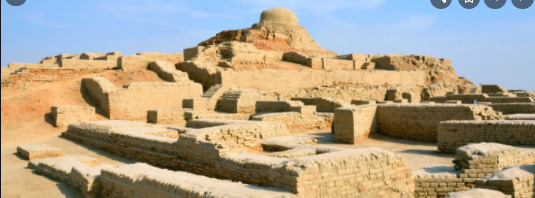
References:
Encyclopedia Britannica. 2021. Mohenjo-daro | archaeological site, Pakistan. [online] Available at: <https://www.britannica.com/place/Mohenjo-daro> [Accessed 15th Feb2021].
History. 2021. Lost City of Mohenjo Daro Puzzles Archaeologists. [online] Available at: <https://www.nationalgeographic.com/history/article/mohenjo-daro> [Accessed 15th Feb 2021].
0 notes
Photo

ARCHAEOLOGY Discovering the World’s Secrets: The Mystery of the Indus. The City of Stone. Thanks to it’s immense Stone-built reservoirs, #dholavira is perhaps the most impressive #indusvalley site of all. 1) Dholavira , with it’s elaborate reservoirs and advanced stone structures, was only discovered in 1968. 2) Wells like this one were crucial to the survival of Dholavira, located in a region where water was scarce. #india #southernasia #archaeologyhistory #theoldworld https://www.instagram.com/p/CCJtjohltjD/?igshid=6trjgczidwby
0 notes
Text
15 Lost Cities discovered in India

How's ya all? If prehistoric facts or bytes excites you, here is one- The Lost Cities discovered in India. Lord Krishna's Dwaraka to Lord Hanuman's Kishkinda, a list of all 15 major lost cities discovered. How many of them did you know? Let us know...
To begin with,
Ancient Lost Cities discovered In South India
South India was the fav hub of architectural magicians. The beautiful art, architecture, and ancient technology one can witness, existing still with a great deal of destruction, easily can make your head scratch...
Muziris
In ‘God's Own Country’ Kerala, a port city, Muziris was discovered and excavated in Kodungallur. The city is situated on the banks of the Periyar River. Archaeologists have successfully found artifacts belonging to countries like Egypt, Yemen, Roman, and West Asia.
Established in: 100 BC
Abandoned in: 1341 AD
Discovered in: 1945; followed by subsequent major discoveries in 1969, 1983, & 2007
Nagarjunakonda
Nagarjunakonda is an island in the middle of the Nagarjuna Sagar dam in the Guntur district of Andhra Pradesh, Macherla. Excavations revealed Buddhist ruins, stupas, viharas (monastery complexes), chaityas (temples), and mandapams(pillared pavilions). The former capital of the Ikshvaku dynasty and a Buddhist town showcased multiple white marble depictions of Buddha’s life.
Established in: 225 AD
Abandoned in: 325 AD
Discovered in: 1926 AD; by archaeologists AR Saraswat and S Venkataramaiah
Vijayanagar or Kishkinda
Watching Ramayana during Lockdown? Heard about Kishkinda– the realm of the monkey gods. The kingdom where Sugriva ruled with the assistance of his friend, Lord Hanuman after Bali. The excavated remains date back to around 300 BC, which strongly makes a point.
Vijayanagar city is located on the south bank of the Tungabhadra River in the Bellary District of northern Karnataka, Hampi. The city was built around the religious center of the Virupaksha temple at the famous UNESCO-listed world heritage site of Hampi. The lost Indian city was home to the Vijayanagar Kingdom that rose to its prime under the rule of Krishnadevaraya.
Established in: 1336 AD
Abandoned in: 1565 AD
Discovered in: 1800 AD; by Colonel Colin Mackenzie
Pattadakal, Karnataka
Pattadakal is the most important tourist attraction of Karnataka. The heritage site is situated on the bank of river Malaprabha. It is located about 10 km from Aihole and 22 km from Badami and known for Chalukya monuments and temples of Jain Narayana Temple, Virupaksha Temple, Sangameshwara Temple, Kashi Vishwanatha Temple, and Mallikarjuna Temple and one of the World Heritage sites in India. The Virupaksha temple is one of the popular tourist destinations that was built by Queen Loka Mahadevi (Trilokyamahadevi) in 745 to commemorate her husband’s victory (Vikramaditya II) over the Pallavas of Kanchi.
Established in: 745 AD
Abandoned in: N/A
Discovered in: N/A
Poompuhar, Tamil Nadu
Poompuhar also is known as Puhar was the town of Tamil Nadu, which was an ancient port city known as Kāveripattinam. The city of Poompuhar was built on the north banks of the river Kaveri and was a major fort of the Chola empire. Later, a king Maravarma Kulasekara Pandiyan built Masilamani Nathar Koil Temple in 1305, which still manages to impress all the tourists to Poompuhar with its architectural richness.
Established in: around 100 BC
Abandoned in: around 300 BC
Discovered in: 1300s and later in 1960s
Lost Cities discovered In North India
Banawali, Haryana
The pre-historic site in Fatehabad district of Haryana belongs to the Indus Valley Civilization. The archaeological site was part of the lower middle valley of the dried up Saraswati river.
Established in: around 2500 BC
Abandoned in: around 1200 BC
Discovered or excavated by R.S. Bisht (ASI)
Rupnagar, Punjab
A major Harappan site discovered in the Rupnagar district of Punjab, India. The Archaeological Museum of ASI exhibits the remains of the first Harappan site of Independent India. The ancient town of Rupnagar is said to have been named by a Gujjar Raja called Rokeshar, who ruled during the 11th century and named it after his son Rup Sen.
Rakhigarhi, Haryana
Pre-dating most of the ancient cities of the Indus Valley Civilisation, Rakhigarhi is one of the oldest and one of the largest settlements of that era. However much like other cities of Harappa and Mohenjo Daro; paved roads, drainage system, large rainwater collection systems, storage system, terracotta bricks, statue production, and skilled application of bronze & precious metals were found at the excavated site.
Established in: 4600 BC
Abandoned in: 1900 BC
Discovered in: 1965 AD
Kalibangan
B. B. Lal, erstwhile DG of Archaeological Survey of India, stated: “Kalibangan in Hanumangarh, Rajasthan has given the evidence of the earliest plowed agricultural field ever revealed through excavation.” And then there are unique fire altars here that make it so important.
Established in: 3700 BC
Abandoned in: 1750 BC
Discovered in: 1919 AD; by Luigi Pio Tessitori, an Italian Indologist, who was working on Ram Charit Manas by Tulsidas
Lost Cities discovered In Gujarat
Lothal
Lothal ranks high in the list of the lost cities of India belonging to the Indus Valley civilization that was discovered and excavated from Saragwala Village in Ahmedabad, Gujarat. Though floods wiped off the town during that time, structures like wells, dwarfed walls, baths, drains, and paved floors can still be seen. This shows how strong the structures were even during that time.
Established in: 3700 BC
Abandoned in: 1900 BC
Discovered in: 1954 AD
Dholavira
A favorite of the archaeologists, Dholavira is one of the lost Indian cities of the Indus Valley Civilisation presently in Khadir Bet in Bhachau Taluka of Kutch, Gujarat. The excavated site includes reservoirs, step well, and various other antiquities such as seals, beads, animal bones, gold, silver, terracotta ornaments, & vessels. Excavations here also brought light to the well-planned designs and organized constructions during those times.
Established in: 2650 BC
Abandoned in: 1450 BC
Discovered in: 1967 AD – 1968 AD; by J. P. Joshi
Surkotada
Another lost city of the Indus Valley Civilisation, Surkotada was discovered in 1964 in Rapar Taluka of Kutch, Gujarat. The ancient mounds and ruins here are hidden by sandstone hills covered with red laterite soil that gives the entire area a reddish-brown color.
Established in: 2100 BC
Abandoned in: 1700 BC
Discovered in: 1964; by Shri Jagat Pati Joshi
Lord Krishna's Dwarka

Dwarka, one of the seven sacred cities of Hinduism and listed as Sapta Puri is the sacred city of Lord Krishna. It is said to have been submerged 6 times in total. Excavated as a submerged city near the present-day town of Dwarka, Gujarat. Huge pillars, antiques, and massive stone walls are visible undersea. However, it is yet to be confirmed if those belong to the times of Lord Krishna. Carbon dating could trace these recovered ruins only up to the 15th century BC. In modern days it is developed as a scuba diving site.
Established in: 1500 BC (estimated)
Abandoned in: 1443 BC (estimated)
Discovered in: 1983 AD
Lost Cities discovered In Central India
Sanchi, Madhya Pradesh
The town needs no introduction in Sanchi. One of the famous historical places in India, Sanchi is known for its Ashoka pillar and Greco-Buddhist style of stupas that depict various scenes from the Jataka tales and stories of Buddha’s life. The relics of Buddha at the once lost city of India were painted with a Mauryan polish to make them glow like glass.
Established in: 300 BC
Abandoned in: 1300 AD
Discovered in: 1818 AD; by British General Taylor
Vasai, Maharashtra
Vasai is the part of Vasai Virar city and one of the most popular shooting destinations around Mumbai. The Bassein Fort is protected by the Archaeological Survey of India and has a list of monuments of national importance.
That’s our list. Did you like it? Would you like to know more? Do you know anything We missed? Then, use the comments box below. Knowledge is best when shared.
Also read-
https://thecontentgeek.com/amazing-facts-of-world/
Lesser Known Facts about Rabindranath Tagore
Read the full article
0 notes
Text
Dholavira - 3500 BCE
Dholavira – 3500 BCE
I picked this article about the fascinating ruins of Dholavira from the TOI e-paper, a few days back.

Snapshot of the article from Times of India e-paper
While presenting the budget, our Finance Minister Nirmala Sitharaman said that five archaeological sites will be developed as “iconic” destinations. These five sites are – Rakhigarhi, Hastinapur, Shivsagar, Dholavira and Adichaunallur. For a…
View On WordPress
0 notes
Text
The Lost City of Mohenjo Daro
Mohenjo-daro is an archaeological site in the province of Sindh, Pakistan. Built around 2500 BCE, it was one of the largest settlements of the ancient Indus Valley Civilisation, and one of the world's earliest major cities, contemporaneous with the civilizations of ancient Egypt, Mesopotamia, Minoan Crete, and Norte Chico. Mohenjo-daro was abandoned in the 19th century BCE as the Indus Valley Civilization declined, and the site was not rediscovered until the 1920s. Significant excavation has since been conducted at the site of the city, which was designated a UNESCO World Heritage Site in 1980. The site is currently threatened by erosion and improper restoration.
The city's original name is unknown. Based on his analysis of a Mohenjo-daro seal, Iravatham Mahadevan speculates that the city's ancient name could have been Kukkutarma ("the city [-rma] of the cockerel [kukkuta]"). Cock-fighting may have had ritual and religious significance for the city, with domesticated chickens bred there for sacred purposes, rather than as a food source. Mohenjo-daro may also have been a point of diffusion for the eventual worldwide domestication of chickens. Mohenjo-daro, the modern name for the site, has been variously interpreted as "Mound of the Dead Men" in Sindhi, and as "Mound of Mohan" (where Mohan is Krishna).
Mohenjo-daro is located west of the Indus River in Larkana District, Sindh, Pakistan, in a central position between the Indus River and the Ghaggar-Hakra River. It is situated on a Pleistocene ridge in the middle of the flood plain of the Indus River Valley, around 28 kilometres (17 mi) from the town of Larkana.[9] The ridge was prominent during the time of the Indus Valley Civilization, allowing the city to stand above the surrounding flood, but subsequent flooding has since buried most of the ridge in silt deposits. The Indus still flows east of the site, but the Ghaggar-Hakra riverbed on the western side is now dry.
Mohenjo-daro has a hot desert climate (Köppen climate classification BWh) with extremely hot summers and mild winters. The highest recorded temperature is 53.5 °C (128.3 °F), and the lowest recorded temperature is −5.4 °C (22.3 °F). Rainfall is low, and mainly occurs in the monsoon season (July–September). Mohenjo-daro was built in the 26th century BCE. It was one of the largest cities of the ancient Indus Valley Civilization, also known as the Harappan Civilization, which developed around 3,000 BCE from the prehistoric Indus culture. At its height, the Indus Civilization spanned much of what is now Pakistan and North India, extending westwards to the Iranian border, south to Gujarat in India and northwards to an outpost in Bactria, with major urban centers at Harappa, Mohenjo-daro, Lothal, Kalibangan, Dholavira and Rakhigarhi. Mohenjo-daro was the most advanced city of its time, with remarkably sophisticated civil engineering and urban planning. When the Indus civilization went into sudden decline around 1900 BCE, Mohenjo-daro was abandoned.
An initial agreement to fund restoration was agreed through the United Nations Educational, Scientific, and Cultural Organization (UNESCO) in Paris on 27 May 1980. Contributions were made by a number of other countries to the project: Preservation work for Mohenjo-daro was suspended in December 1996 after funding from the Pakistani government and international organizations stopped. Site conservation work resumed in April 1997, using funds made available by the UNESCO. The 20-year funding plan provided $10 million to protect the site and standing structures from flooding. In 2011, responsibility for the preservation of the site was transferred to the government of Sindh. Currently the site is threatened by groundwater salinity and improper restoration. Many walls have already collapsed, while others are crumbling from the ground up. In 2012, Pakistani archaeologists warned that, without improved conservation measures, the site could disappear by 2030.
1 note
·
View note
Text
Daily Current Affairs Dated on 07-Feb-2020
Daily Current Affairs Dated on 01-Feb-2020 Contents: 1. CEA sees growth rebounding to 6% 2. WHO declares coronavirus outbreak a global emergency 3. Crop dusting with drones is illegal, says Centre 4. Needed: fewer regulations for startups 5. A chance to chart China-like export trajectory 6. Thalinomics: the formula behind one square meal 7. Budget 2020: Archaeological Sites set to be developed CEA SEES GROWTH REBOUNDING TO 6% Why in news? The economic survey expects GDP growth to revive from the 5% estimated or this year to a range between 6%-6.5% next year. To make a point about how being pro-crony is different from being pro-business, the Survey refers to the gains made unfairly by stocks of connected companies before the CAG report on the 2G spectrum allocations came out in 2011, again rejuvenating UPA-era malfeasance memories. Daily Current Affairs Dated on 01-Feb-2020 Economic Survey on GDP Growth Rate WHO DECLARES CORONAVIRUS OUTBREAK A GLOBAL EMERGENCY The last time WHO declared a global health emergency was in 2019 for the Ebola outbreak in eastern Congo that killed more than 2,000 people. The WHO declares a Public Health Emergency of International Concern when there is “an extraordinary event which is determined… to constitute a public health risk to other states through the international spread of disease.” The agency also declared global emergencies for the 2016 Zika virus, the 2009 H1N1 swine flu, and the 2014 polio and Ebola outbreaks. Daily Current Affairs Dated on 01-Feb-2020 What does it mean? Countries are reminded that they are legally required to share information with WHO under the IHR. Any detection of 2019-nCoV in an animal (including information about the species, diagnostic tests, and relevant epidemiological information) should be reported to the World Organization for Animal Health (OIE) as an emerging disease All countries should be prepared for containment, including active surveillance, early detection, isolation and case management, contact tracing and prevention of onward spread of 2019-nCoVinfection, and to share full data with WHO. Countries must inform WHO about any travel measures taken. Countries are cautioned against actions that promote stigma or discrimination, in line with the principles of Article 3 of the IHR. CROP DUSTING WITH DRONES IS ILLEGAL, SAYS CENTRE Why in news? Use of drones for agrochemical spraying had increased of late. This would create a lot of problems. What are problems? Aerial spraying impacts a larger area, while decreasing the efficacy on the target pests. Eg. Kasargod in Kerala reeling under such impact due to aerial spraying of Endosulfan for over 25 years The Insecticide Act does not allow aerial spraying. Drones and unmanned machines can be hazardous tools for spraying hazardous chemicals in many ways. Allowing Daily Current Affairs Dated on 01-Feb-2020 aerial spraying, using drones and unmanned, remote controlled vehicles can be catastrophic, NEEDED: FEWER REGULATIONS FOR START-UPS India needs to work on improving the ease of doing business, especially the ease of starting business, registering property, paying taxes, or enforcing contracts, according to the Economic Survey. World Bank’s Ease of Doing Business Rankings Cumbersome norms “If you want to start up a firm in India, it takes 18 days on an average with 10 procedures that can be often cumbersome. If we contrast it with New Zealand, which is the best in business, it takes half a day to fill up one form Daily Current Affairs Dated on 01-Feb-2020 A CHANCE TO CHART CHINA-LIKE EXPORT TRAJECTORY Why in news? The Economic Survey says India has an unprecedented opportunity to chart a China like, labour Intensive, export trajectory by integrating “Assemble in India for the world” into the Make in India policy and thus can raise its export market share to 3.5 % by 2025 and 6% by 2030 THALINOMICS: THE FORMULA BEHIND ONE SQUARE MEAL For the average worker in India’s organised manufacturing sector, the affordability of a plate of vegetarian food — comprising rice or roti, dal and sabzi has improved 29% since 200607, according to Thalinomics, a take on the economics of food by the Economic Survey. For non-vegetarians, affordability has risen 18%. BUDGET 2020: KNOW ABOUT THE ARCHAEOLOGICAL SITES SET TO BE DEVELOPED Rakhigarhi, Haryana Daily Current Affairs Dated on 01-Feb-2020 Rakhigarhi, Haryana Pre-Harappan Civilisation settlement, and later a part of the ancient civilisation itself, between 2600-1900 BCE. What are found?: Remnants of a planned township with mud-brick houses and proper drainage system, along with terracotta jewellery, conch shells, vase and seals, things the Harappans were known for. Daily Current Affairs Dated on 01-Feb-2020 Hastinapur, Uttar Pradesh We know Hastinapur as the ancient capital city of Pandavas and Kauravas from the epic Mahabharata. Excavations at Hastinapur reportedly began in 1950-52 What are found?: Arrows, spearheads, shafts, tongs, hooks, axes and knives, amounting to about 135 iron objects. Shri Digamber Jain Bada Mandir is one of the oldest temples at the site, among others like Jambudweep Jain temple, Shwetambar Jain temple, Prachin Digambar Jain Temple and Astapad Jain Temple. Daily Current Affairs Dated on 01-Feb-2020 Sivasagar, Assam This place used to be the capital of the Ahom kingdom from 1699-1788, and was formerly called Rangpur. The province was later conquered by the British. Guwahati Circle Archaeological Survey of India mentions excavations conducted at the Karenghar (Talatalghar) complex, the citadel of Ahom power. What are found?: Structural remains of pathways, long walls, terracotta pipes for drains, vase, and vessels, to name a few. The other important historical site is Rang Ghar, an amphitheatre for the Ahom kings, known to have been used for enjoying sports. Daily Current Affairs Dated on 01-Feb-2020 Dholavira, Gujarat Ruins of the Harappan civilisation Deemed the fifth largest Harappan site What are found?: Artefacts excavated range from terracotta items and seals to urns and copper ornaments. About 10 large stone inscriptions have also been found at the site, written in Indus Valley script Most importantly, it has one of the world’s earliest water conservation systems–a rainwater harvesting system–ever excavated Daily Current Affairs Dated on 01-Feb-2020 Adichanallur, Tamil Nadu This is an archaeological urn-burial site in the Thoothukudi district The objects yielded by these burial sites are finely made pottery of various kinds in great number; many iron implements and weapons; vessels and personal ornaments in bronze; a few gold ornaments; a few stone beads; bones; and some household stone implements used for grinding curry or sandalwood, besides the excavated urns which reportedly contained “complete skeletons”.
#ias#ias exams#ias preparation#ias academy#UPSC#upsc exam#upsc preparation#upsc recruitment 2020#Current Affairs#dailycurrentaffairs
0 notes